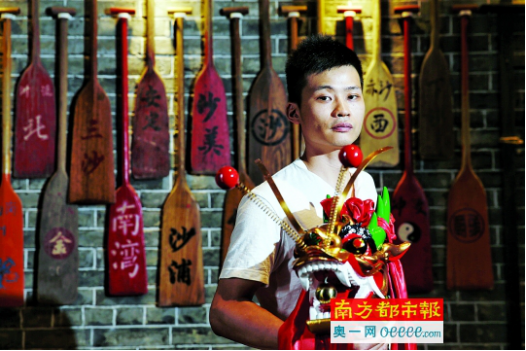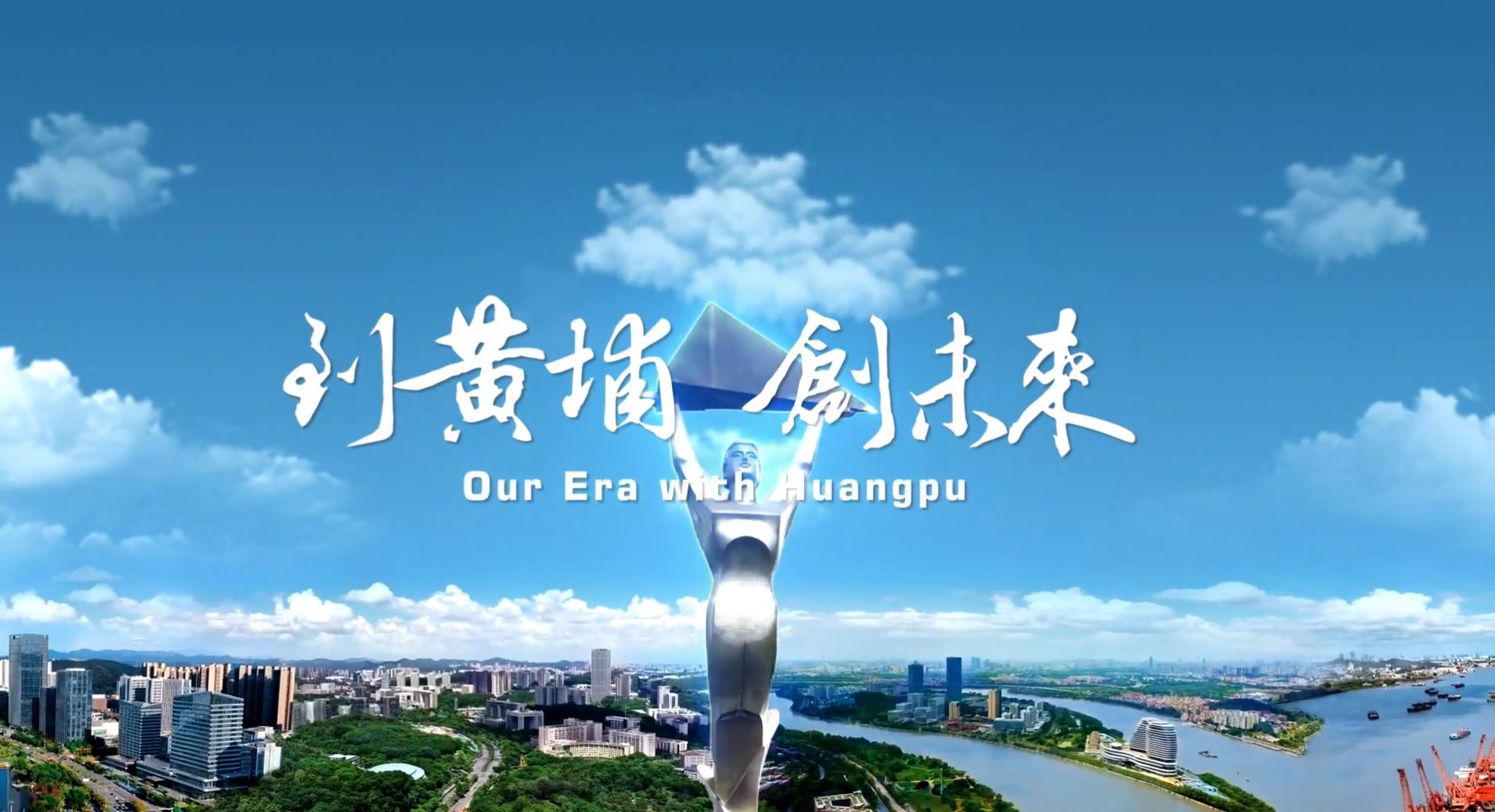Southern Metropolis Daily: young artist keeps traditional culture alive
Source: chinadaily.com.cn | Updated : 2019-05-27Chinese post-1985 generation member Zhang Weichao is an inheritor of an intangible cultural heritage in Xiasha village in Guangzhou's Huangpu district, where dragon boat culture is quite popular.
He quit his job as a mentor in an automobile repair training school ten years ago and became a sculptor of dragon's head for boats. Meanwhile, he founded an association to promote traditional dragon boat culture.
Now, he runs his own studio, recruits apprentices and offers lectures, hoping to promote the traditional culture.
Different from the hull, the head of the dragon boat is inlaid with several pieces of wood. The centerpiece of a dragon's head is carved from a log and undergoes a number of processes, including design, engraving, grinding, polishing, lacquering and decoration. The common tools are chisels, graters and gravers.

Dragon head of a traditional dragon boat [Photo provided to chinadaily.com.cn]
It takes about three or four days to make a dragon head and can require about a month to complete a complicated one. Though 3D technology can be used, the dragon heads of different villages have their own features. One template cannot be used to produce various dragon boats.
In addition, the cost of a 3D dragon head is high and the handmade ones are more lively and vivid. Thus, many villages insist on inviting craftsmen to make them.
There are seven dragon boat builders in Guangzhou, but no more than 10 craftsmen can carve dragon heads and tails. Most of them are in their fifties and one from the post-1980 generation like Zhang is rare to see.
Dragon heads and tails are hailed as the "soul" and independent parts of a dragon boat. They are usually presented in ancestral halls and installed on the boat ahead of the Duanwu(or Dragon Boat) Festival, which falls on the 5th day of the fifth lunar month.
The fourth lunar month is the busiest season for Zhang Weichao. He said he had to ask some of his customers to place their orders earlier next year due to limited time.
He can produce and repair no more than 40 dragon heads during the peak season every year.
Zhang said the eighth lunar month is the best time for dragon boat manufacturing. Customers from the Pearl River Delta or even abroad place their orders with Zhang, so he is busy all through the year.
"A dragon head represents the culture and spirit of a village, and it is sacred goods that are respected and guarded by villagers," he noted, adding that every head should be unique and designed with local cultural, historical and folk elements, which consume the most concentration and time among all procedures.
He said he usually talks with local residents to know more about the village's history, since they have different totems and worships and taboos. For a new dragon head, he has to discuss the shape and colors with villagers for hours. A design sketch requires repeated deliberation.

Zhang says he hopes to make the Duanwu culture and dragon boat culture known by more people through making dragon heads. [Photo provided to chinadaily.com.cn]
Zhang was recently entrusted by a local village to make two dragon heads, one for men's dragon boat races and the other for women. He said the one for the men's races should be more ferocious and powerful and took out a sketch, explaining the difference in details between it and the one for women.
The women's version is more mild and peaceful and painted with pink, which is quite rare in traditional dragon boats.
The two heads were recently delivered to a village by Zhang and unveiled in its ancestral hall on the 17th day of the fourth lunar month.
Zhang has recruited four apprentices over the past two or three years. None of them had ever been exposed to dragon boats.
One apprentice, who is called "A Le", was inspired by Zhang's story on the internet and came to Guangzhuo four months ago from his hometown, Xinxiang in Central China's Henan province.
Zhang is an inheritor of the dragon boat carving, an intangible cultural heritage of Huangpu district. He took the honorary title as an obligation for protecting and breeding the traditional culture.
In the past, traditional craftsmanship died out because the masters were afraid of being replaced by their apprentices and reluctant to spread the skills. However, with the official certification as inheritors of intangible cultural heritages, more masters feel able to recruit apprentices and teach their skills.
Zhang founded the Guangzhou Traditional Dragon Boat Association in 2006 and about 100 dragon boat fans have joined to promote the culture.
The association was registered at the local authorities in 2013 and became the first non-government dragon boat organization with official identification. It was renamed the Guangzhou Association for the Promotion of Dragon Boat Traditional Culture.
According to Zhang, most people know little about the connotation of the Dragon Boat Festival, although they celebrate it every year.
He mentioned the "long chuan fan", or dragon boat feast. People have mistakenly considered it as a deed of conspicuous consumption; instead, it is a simple but heartfelt way to invite fellows in nearby villages to share a dinner.
Another example, the "long chuan jian", or dragon boat invitation, is sent to people in fellow villages by dragon boat. Though the invitation can be replaced by an electronic one through Wechat, which is more simple and convenient, the traditional way is more sincere.
At present, Zhang cooperates with the Guangzhou Folk Literary Artists Association to spread dragon boat culture. He said he will invite insiders to join in seminars and organize activities, such as visit to dragon boat builders.
He hopes to call on more participants to further promote the traditional culture.
- Investment and Entrepreneurship
- Investment Advantages
- Investment Guide
- Policies
- Key Projects
- Major Industries
- Industrial Parks
- Investment Opportunities
- Technological Innovation
- IPR
- Enterprises
- Talents
All rights reserved. Presented by China Daily
粤ICP备16087157号-1










